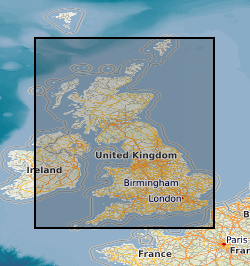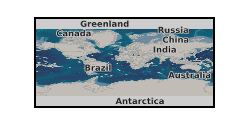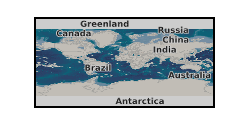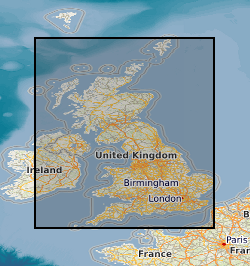Remote sensing
Type of resources
Topics
Keywords
Contact for the resource
Provided by
Years
Formats
Representation types
Update frequencies
Scale
-

Index to various collections of Aerial Photographs purchased or obtained by BGS and its precursors as part of its surveying activities. The index was set up in 2000 and mainly covers Great Britain. The level of spatial detail depends on the flight plans provided, but most are referenced at least to OS quarter sheet level.
-

The database contains scanned photographs (at 1016dpi) of the UK and various locations around the world. Some are single band (black&white) others are 3 band colour. The images are stored in various formats on various types of magnetic media: .COT raw scans can only be used on the Intergraph ImageStation; .JPG (Intergraph format); .TIF. Processed scans may also be saved as stereomodels (with project data) and as orthophotographs. Mono coverage for most of the UK and we are constantly acquiring stereo data. Data is updated when unscanned areas are required by projects.
-

**This dataset has been withdrawn and is no longer avaible from BGS** The database contains satellite images of the UK purchased by the BGS or on its behalf by NERC. It includes data from the Lansdat, SPOT, Radarsat and ERS satellites. The images are stored in proprietary format on various types of magnetic media. The data are currently stored by path-row scene numbers and as mosaics on tapes, CDs and drives. Entire UK is covered by the dataset, however, there are gaps in coverage from individual sensors. Coverage exists for countries (or parts of countries) where work has been carried out.
-

Collections of Aerial Photographs purchased or obtained by BGS and its precursors as part of its surveying activities. Data covers mainly Great Britain or areas where BGS has worked overseas and dates from the 1940's. The collection is incomplete and there are copyright and other constraints on its use.
-
This dataset comprises locational data highlighting the geographic position of emperor penguin colonies along the circumpolar Antarctic coastline as identified from satellite imagery (Sentinel2 and MAXAR VHR (Very High Resolution)) from August to December 2023. This dataset is part of the long-term monitoring of emperor penguin colonies and will support conservation efforts in Antarctica. This dataset was supported by NERC core funding and WWF grant GB095701.
-
The Antarctic mass trends have been collated from a combination of different remote sensing datasets. These are trends of yearly elevation changes over Antarctica for the period 2003-2013 due to the different geophysical processes driving changes in Antarctica: ice dynamics, surface mass balance and glacio-isostatic adjustment (GIA). Net trends can be easily calculated by adding together surface and ice dynamics trends. 20 km gridded datasets have been produced for each process, per year (except the GIA solution which is time-invariant). To convert elevation to mass trends, we also provide the density fields for surface (SMB) and GIA processes used in Martin-Espanol et al (2016). These can be directly multiplied by the dh/dt. To convert dh/dt from ice dynamics, simply multiply by the density of ice. Mass smb = dh/dt smb * d surf Mass ice = dh/dt ice * d ice (not provided) Mass gia = dh/dt gia * d rock NERC grant: NE/I027401/1
 NERC Data Catalogue Service
NERC Data Catalogue Service